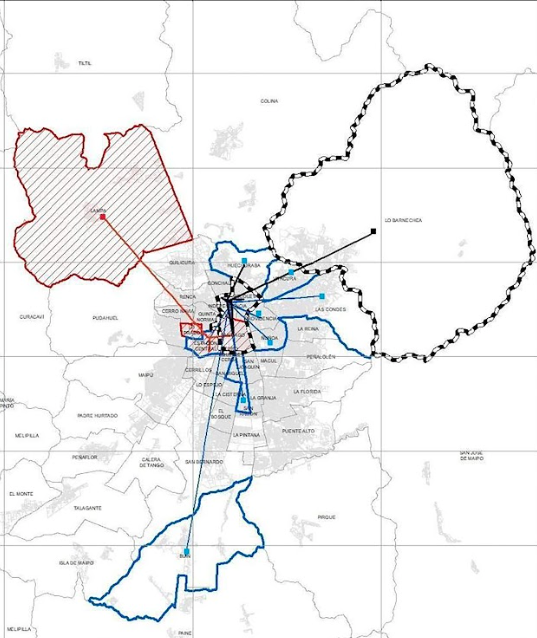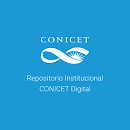Analysis of the mobility capital of resident agents in the pericentre of Santiago de Chile: urban mobility as capital accumulation
DOI:
https://doi.org/10.14409/dee.2022.1.e0015Keywords:
Mobility capital, high-rise urban renewal, urban mobility, densificationAbstract
Empirical evidence shows that high-rise urban renewal, in addition to socioeconomically re-stratifying neighborhoods, establishes an offer of mobility and territorial configuration that may be advantageous for a given subject and not for another in terms of economic, cultural and even physical mobility and transportation restrictions. These conditions are conceptualized in the "mobility capital", understood as the capacity of subjects to be mobile in the territory based on access, competition and appropriation capabilities. The objective is to understand how the conditions of mobility capital determine a socially differentiated use of the territory expressed in the daily mobility of different inhabitants of the pericenter of Santiago. A quantitative analysis of the Neighborhood Panel Survey 2 (2016) provided by the FONDECYT Regular 1151287 Project, in which the authors participate, is carried out, comparatively analyzing three study units in the pericenter of Santiago de Chile. The results demystify some of the efficiency assumptions associated with verticalization where the mobility decisions of new apartment residents are shaped in dimensions of freedom and greater options, not so for former house residents, who present physical restrictions and limited resources to exercise mobility; that is, they are spatially "confined".
References
Apaolaza, R., Blanco, J., Lerena, N., López-Morales, E., Lukas, M. y Rivera, M. (2016). Transporte, desigualdad social y capital espacial: análisis comparativo entre Buenos Aires y Santiago de Chile. Íconos, Revista de Ciencias Sociales, (56), 19-41. https://doi.org/10.17141/iconos.56.2016.2148
Bourdieu, P. (1986). The form of capital. In J. G. Tichardson (ed.), Handbook of Theory and Research for the Sociology of Education, Greenwood, New York, 241-258.
Boer, R., Zheng, Y., Overton, A., Ridgeway, G. y Cohen, D. (2007). Neighborhood design and walking trips in ten U.S. Metropolitan Areas. American Journal of Preventive Medicine, 32(4), 298-304. https://doi.org/10.1016/j.amepre.2006.12.012
Cresswell, Tim (2010). Towards a politics of mobility. Environment and Planning D: Society and Space, 28(1), 17 – 31. https://doi.org/10.1068/d11407
Contreras, Y. (2011). La recuperación urbana y residencial del centro de Santiago: Nuevos habitantes, cambios socioespaciales significativos. EURE, 37(112), 89-113. http://dx.doi.org/10.4067/S0250-71612011000300005
Contreras, Y. (2016). Nuevos habitantes del centro de Santiago. Editorial Universitaria.
Dempsey, N. y Jenks, M. (2010). The future of the compact city. Built Environment, 36(1), 116-121. http://www.jstor.org/stable/23289987
Flamm, M. and Kaufmann, V. (2006). Operationalising the Concept of Motility: A Qualitative Study. Mobilities, 1(2), 167-189. https://doi.org/10.1080/17450100600726563
Hernández, D. y Witter, R. (2011). Entre la ingeniería y la antropología: hacia un sistema de indicadores integrado sobre transporte público y movilidad. Revista Transporte y Territorio 4, 29-46. https://www.redalyc.org/articulo.oa?id=333027082003
INE. (2002). Síntesis de resultados del Censo. Chile: Instituto Nacional de Estadísticas
Jirón, P. (2010) Mobile Borders in Urban Daily Mobility Practices in Santiago de Chile. International Political Sociology, 4(1), 66–79. https://doi.org/10.1111/j.1749-5687.2009.00092.x
Kaufmann, V., Bergman, M. and Joye, D. (2004). Motility: Mobility as Capital. International Journal of Urban and Regional Research, 28(4), 745-56. https://doi.org/10.1111/j.0309-1317.2004.00549.x
Kaufmann, V., Audikana, A. (2020). Mobility capital and motility. In Handbook of urban mobilities. Routledge
López-Morales, E. (2011) Gentrification by Ground Rent Dispossession: The Shadows Cast by Large Scale Urban Renewal in Santiago de Chile. International Journal of Urban and Regional Research, 35(2), 1-28. https://doi.org/10.1111/j.1468-2427.2010.00961.x
López-Morales, E. (2013) Gentrificación en Chile: aportes conceptuales y evidencias para una discusión necesaria. Revista de Geografía Norte Grande, (56), 31-52. https://dx.doi.org/10.4067/S0718-34022013000300003
López-Morales, E., Gasic, I., y Meza, D. (2014). Neoliberalismo, regulación ad-hoc de suelo y gentrificación: el historial de la renovación urbana del sector Santa Isabel, Santiago. Revista de geografía Norte Grande (58), 161-177. http://dx.doi.org/10.4067/S0718-34022014000200009
López-Morales, E. (2015). Assessing exclusionary displacement through rent gap analysis in the urban redevelopment of inner Santiago, Chile. Housing Studies, 31(5), 540-55. https://doi.org/10.1080/02673037.2015.1100281
López Morales, E. y Sanhueza, C. (2016). Diseño y aplicación de metodología de cálculo de valorización de suelo generada por aportes de Metro y regulaciones urbanas: El caso de Santiago de Chile, 2008- 2011. Conferencia COES-London School of Economics Desigualdades/Inequalities, Facultad de Economía y Negocios, U. de Chile, 3 noviembre.
López-Morales, E. y Orozco, H. (2018). Ni proletariados ni propietarios: Especuladores. Una radiografía a los agentes de mercado de la gentrificación inmobiliaria en Santiago de Chile. Scripta Nova, 23(605), 1-33. https://doi.org/10.1344/sn2019.23.21710
López-Morales, E., Ruiz-Tagle, J., Santos Junior, O., Blanco, J. & Salinas Arreortúa, L. (2021) State-led gentrification in three Latin American cities, Journal of Urban Affairs, https://doi.org/10.1080/07352166.2021.1939040
Maloutas, T. y Spyrellis, S. (2016). Vertical segregation: Mapping the vertical social stratification of residents in Athenian apartment buildings. Mediterraneé, 127, 27-36. https://doi.org/10.4000/mediterranee.8378
Marín, H.; Ruiz-Tagle, J.; López-Morales, E.; Orozco, H. & Monsalves, S. (2019). Gentrificación, clase y capital cultural: Transformaciones socioculturales en barrios peri-centrales de Santiago de Chile. Revista Española de Investigaciones Sociológicas, 166, 107-134. http://dx.doi.org/10.5477/cis/reis.166.107
Marquet, O. y Miralles-Guasch, C. (2014). La proximidad en Barcelona. Un análisis desde los tiempos de desplazamiento cotidianos. Ciudades, 17(1), 99-120. https://doi.org/10.24197/ciudades.17.2014.99-120
Slater, T. (2009). Missing Marcuse: On gentrification and displacement. City, 13(2- 3), 292-311. https://doi.org/10.1080/13604810902982250
Villouta, D. (2018). “Motilidad” de agentes residentes en barrios en renovación en altura: análisis de casos pericentrales de Santiago de Chile, 2015-2018. Tesis para optar al grado de Magíster en Urbanismo. Universidad de Chile, Santiago. https://repositorio.uchile.cl/handle/2250/175369

Published
How to Cite
Issue
Section
License
Copyright (c) 2022 Desarrollo, Estado y Espacio

This work is licensed under a Creative Commons Attribution-NonCommercial-ShareAlike 4.0 International License.











